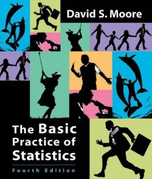Randomization avoids bias. Suppose that the 25 even-numbered studentsAPPLETamong the 50
Chapter 0, Problem 9.48(choose chapter or problem)
Randomization avoids bias. Suppose that the 25 even-numbered studentsAPPLETamong the 50 students available for the comparison of on-campus and onlineinstruction (Example 9.4) are older, employed students. We hope thatrandomization will distribute these students roughly equally between theon-campus and online groups. Use the Simple Random Sample applet to take20 samples of size 25 from the 50 students. (Be sure to click Reset after eachsample.) Record the counts of even-numbered students in each of your20 samples. You see that there is considerable chance variation but no systematicbias in favor of one or the other group in assigning the older students. Largersamples from a larger population will on the average do an even better job ofcreating two similar groups.
Unfortunately, we don't have that question answered yet. But you can get it answered in just 5 hours by Logging in or Becoming a subscriber.
Becoming a subscriber
Or look for another answer
